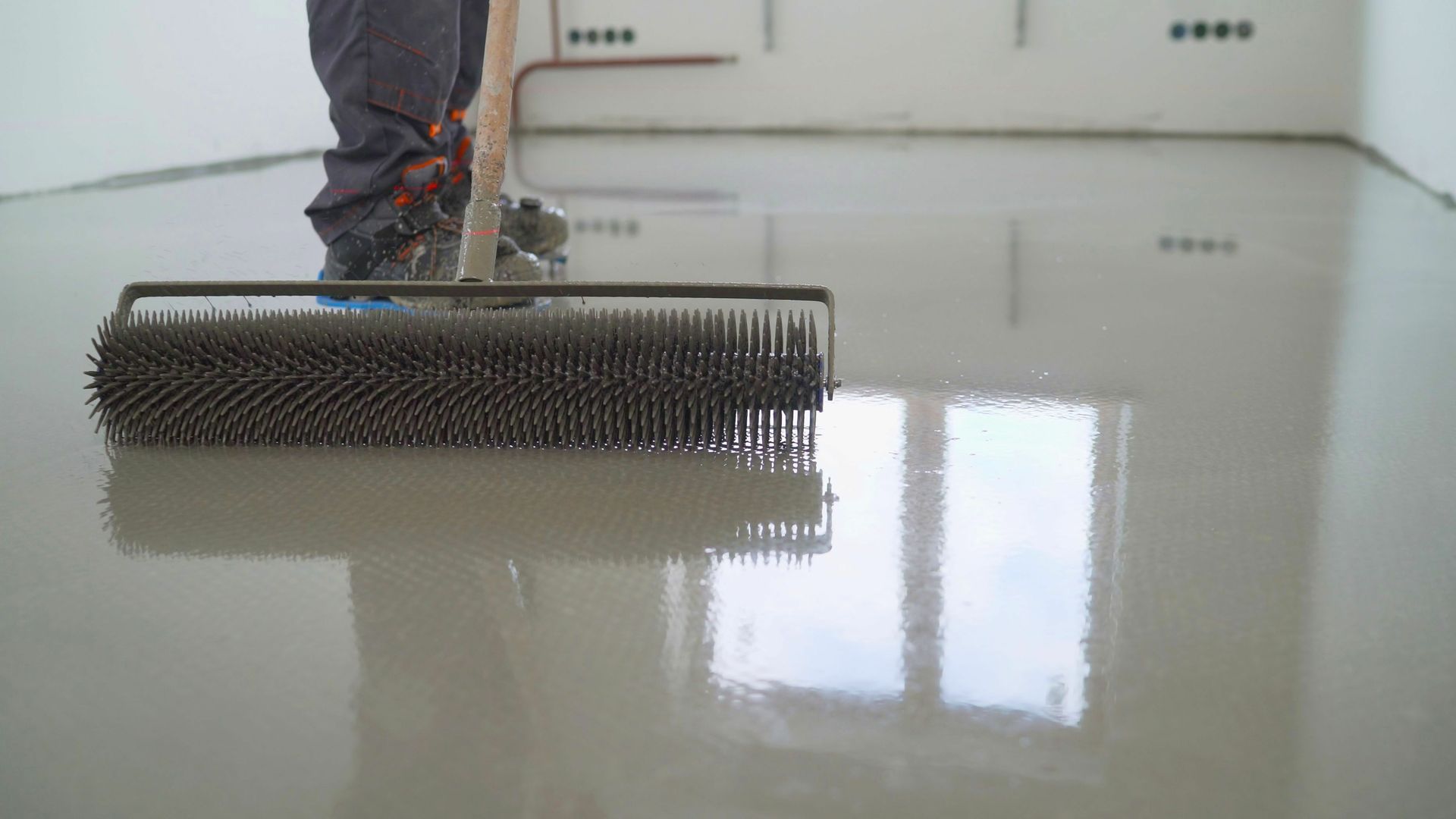Screed Drying Times
Timing is everything when it comes to construction projects. Delays can be expensive. Workers need to be paid, equipment may need to be rented for longer periods, and unforeseen complications can arise. Sticking to a schedule helps ensure the project stays within budget.
Secondly, construction projects involve a complex web of subcontractors, material deliveries, and equipment usage. A good schedule ensures these resources are available when needed and avoids delays caused by waiting on materials or crews.
And finally, late projects inconvenience clients who may need to move in, open a business, or use the completed space by a certain date. Delays can damage the reputation of the construction company.
So with that all said, understanding screed drying times is a seemingly small thing, but ties into the overall construction process and needs to be understood. That’s why the Clockwork Screed team is here to educate you on screed drying times!
What is Screed?
Screed is a thin layer applied on top of an existing concrete subfloor for construction purposes. It's most commonly made from a mixture of cement, sand, and water, very similar to concrete.
Flowing Screed
Flowing screed, also known as liquid screed, is a specific type of screed material used in construction.
- Consistency: Unlike traditional sand and cement screed which is stiff and requires manual application, flowing screed has a much thinner, more fluid consistency. This allows it to be pumped or poured onto the subfloor.
- Application: Flowing screed is self-levelling to a large extent. Once poured, it spreads out and fills in uneven areas, minimising the need for manual smoothing. This makes it faster and easier to apply compared to traditional screed.
- Drying time: Flowing screed typically dries much faster than traditional screed. You can often walk on it within 24-48 hours, although full drying for floor coverings can still take several weeks.
- Benefits for underfloor heating: Flowing screed is a popular choice for use with underfloor heating (UFH) systems for several reasons:
- Faster heat transfer: The liquid consistency allows the screed to fully surround the UFH pipes, resulting in more efficient heat transfer to the floor surface.
- Lower profile: Flowing screed can be applied in a thinner layer compared to traditional screed, which can be helpful when floor height is a concern.
Here are some additional points about flowing screed:
- Material: Flowing screed is typically made from a recycled calcium sulphate binder, aggregates, and additives that give it its self-compacting properties.
- Applications: While ideal for UFH systems, flowing screed can be used for any project where a level subfloor is needed for floor finishes like tile, wood, or carpet.
- Considerations: While faster drying and easier application are advantages, flowing screed may be more expensive than traditional screed. It's also important to ensure the subfloor is properly prepared before applying flowing screed.
Screed Drying Times
Screed drying times can vary depending on several factors:
- Screed type: There are two main types of screed used:
- Traditional screed: This is a sand and cement mix and takes the longest to dry, up to 12 weeks for a typical screed depth.
- Liquid screed: This is a pre-mixed material that dries much faster. You can typically walk on it after 24-48 hours, but complete drying for floor coverings can still take 4-6 weeks.
- Thickness of the screed: The thicker the screed, the longer it will take to dry. This applies to both traditional and liquid screed.
- Drying conditions: Temperature and humidity affect drying times. Warmer temperatures and lower humidity will speed up drying. Ideally, you want a temperature around 20°C and good air circulation after the initial 24 hours.
Traditional Screed Drying Times
1 day per mm for the first 50mm depth
2 days per mm for every mm over 50mm depth
Liquid Screed Drying Times
Walk-on time: 24-48 hours
Full drying for floor coverings: 4-6 weeks (may be faster with forced drying techniques after 7 days)
Screed Drying Times FAQs
How does screed thickness affect drying time?
The thicker the screed, the longer it will take to dry for both traditional and flowing screed.
What are ideal drying conditions for screed?
A temperature around 20°C and good air circulation after the initial 24 hours will speed up drying.
Can I turn on my underfloor heating (UFH) to dry the screed faster?
No! Wait until the screed is completely dry before switching on your UFH system. Heating while wet can trap moisture and lead to cracks or damage.
How can I tell when the screed is dry?
Use a moisture metre to measure the moisture content of the screed before installing floor coverings.









